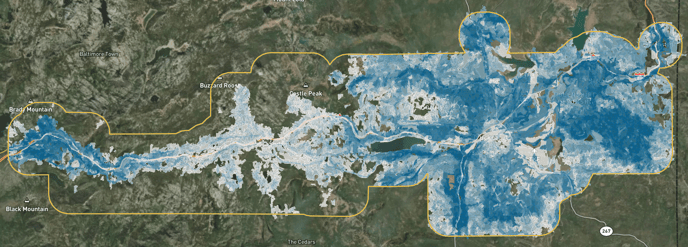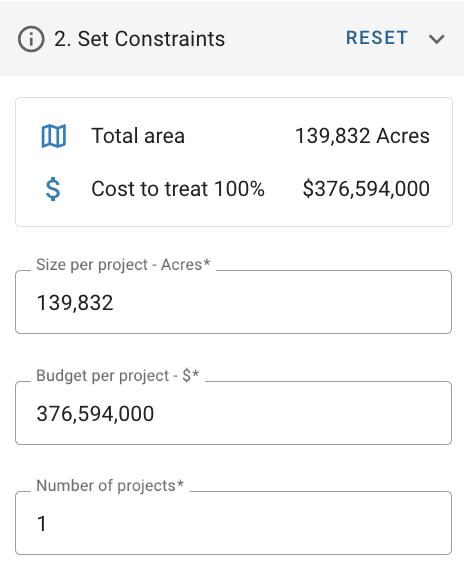Build prioritized, sequenced project plans
In the previous section, we explored the ways that partners can plan to emphasize different objectives. Each of the eight objectives can be weighed from zero to five.
After you’ve emphasized your objectives, the platform has nearly all of the information it needs to build you and your team a scenario. Below is an example scenario that prioritizes assets and safety three times higher than everything else; the platform shows the highest-impact opportunities to reduce risk.

Remember, the risk reduction opportunities map is the result of all the data you and your partners have provided, such as your SARAs and DiMAs. The map shows these values and the risk to them.

In an ideal world, you and your team would be able to treat this entire area with unlimited personnel and budget. For example, the analysis area above is 139,832 acres, and would cost over an estimated $376 million to treat the entire area. However, we know resources are limited, and you need project plans that are feasible to implement. The final step is constraining your projects based upon your available resources.
These constraints include the number of acres you’d like each project to be approximately sized, the dollar amount you can spend per project, and the number of projects. You are able to build your scenario using no more than two of the constraints. For this example, we’ve set these constraints at 4 total 10,000 acre projects costing $100,000 each.
Click “Create Scenario” and Vibrant Planet creates your scenario. To continue our example, across the 139,832 acres, the platform has helped you and your partners hone in on three prioritized projects spanning 30,000 acres.

This series of prioritized projects is known as a scenario. Because we know many partners may want to set different priorities and constraints, Vibrant Planet makes it possible to build many different scenarios on a planning area and compare them. Having the ability to create multiple scenarios empowers you to take into account partner's priorities. In the next section, we’ll explore the ways to compare scenarios and get to consensus.
.png?width=800&height=147&name=VP_Logo_Horiz_Color_RGB%20(4).png)